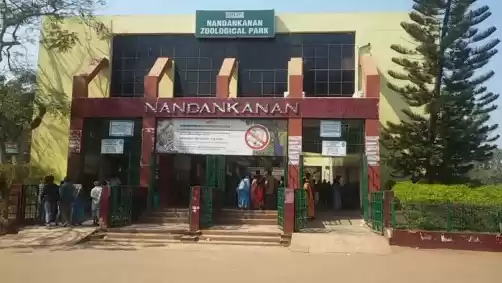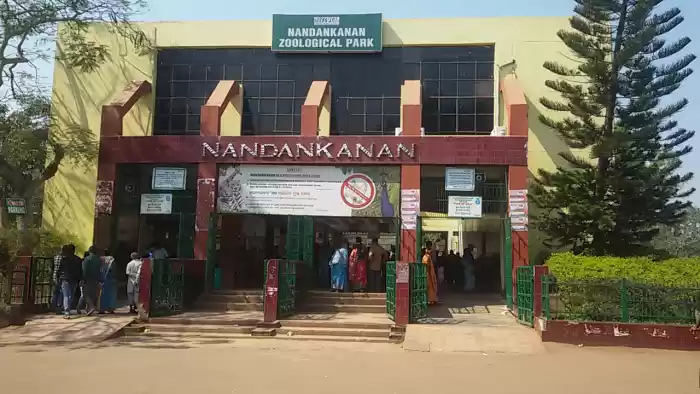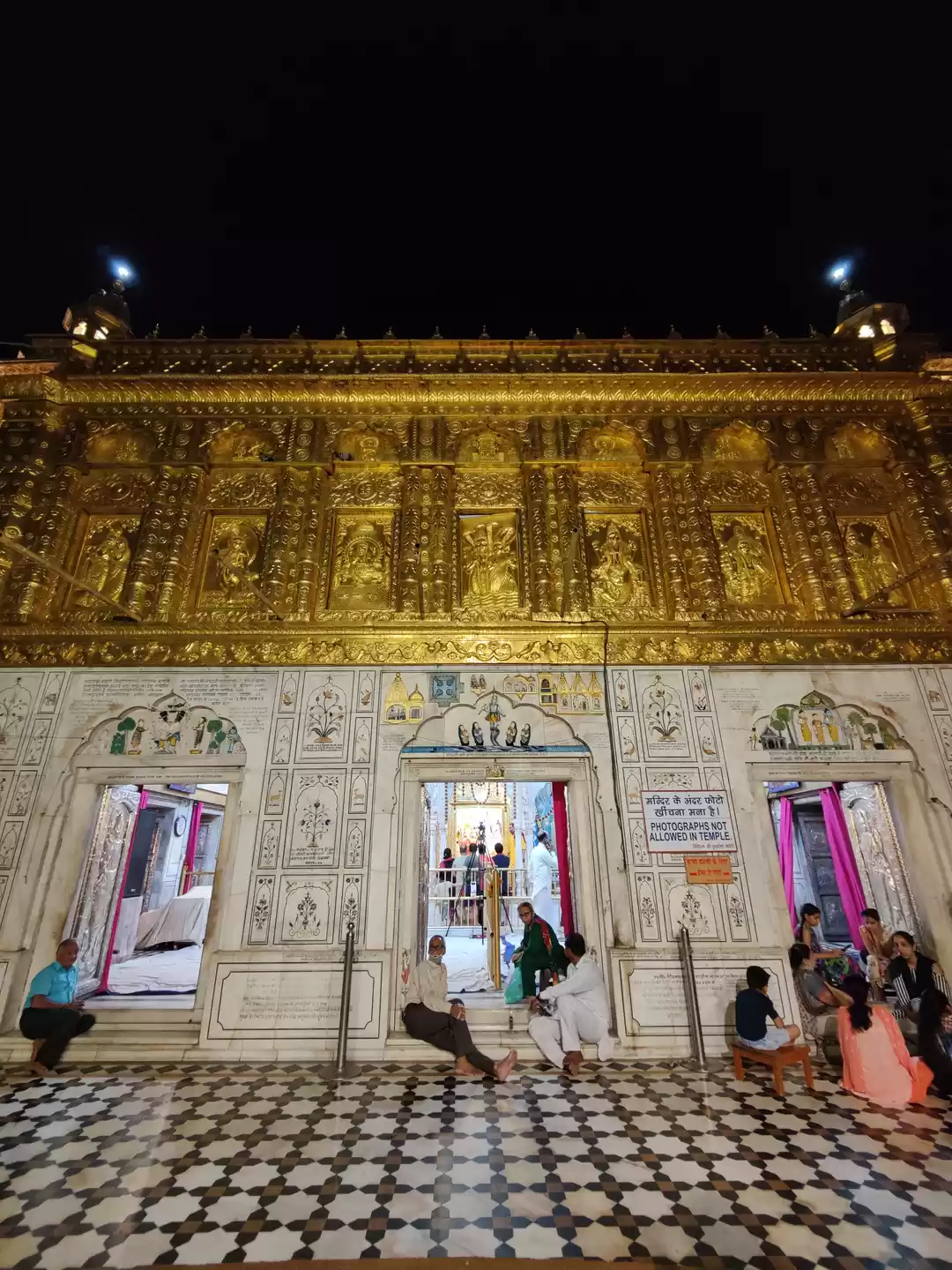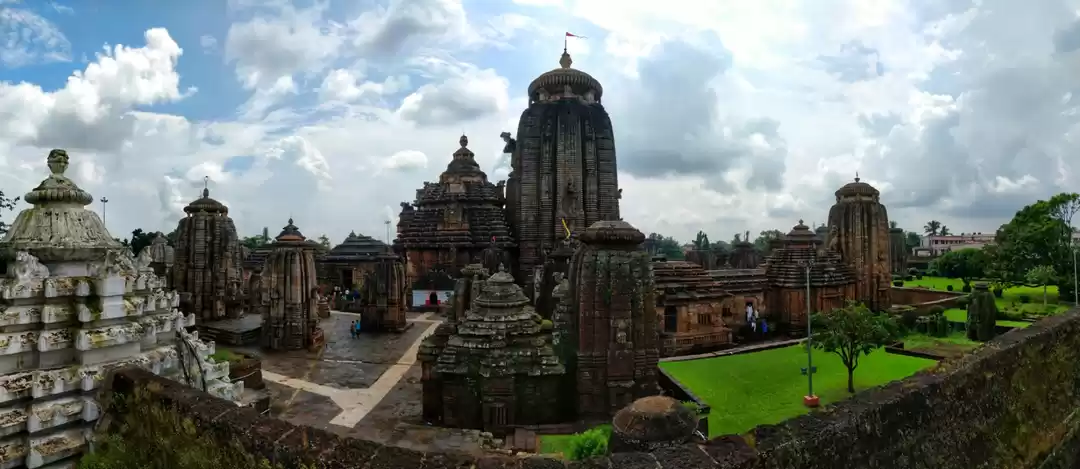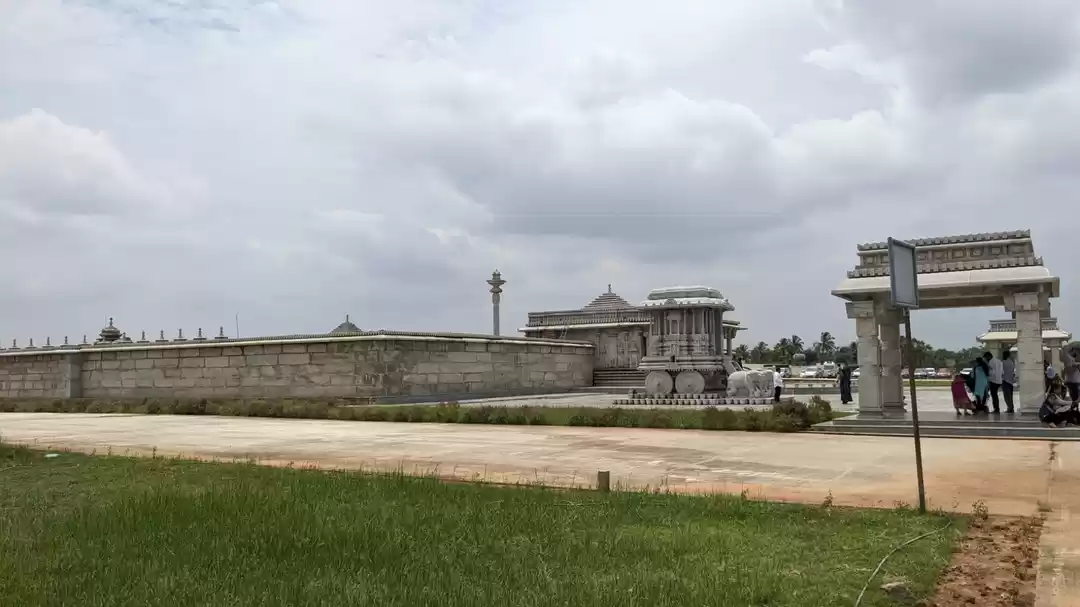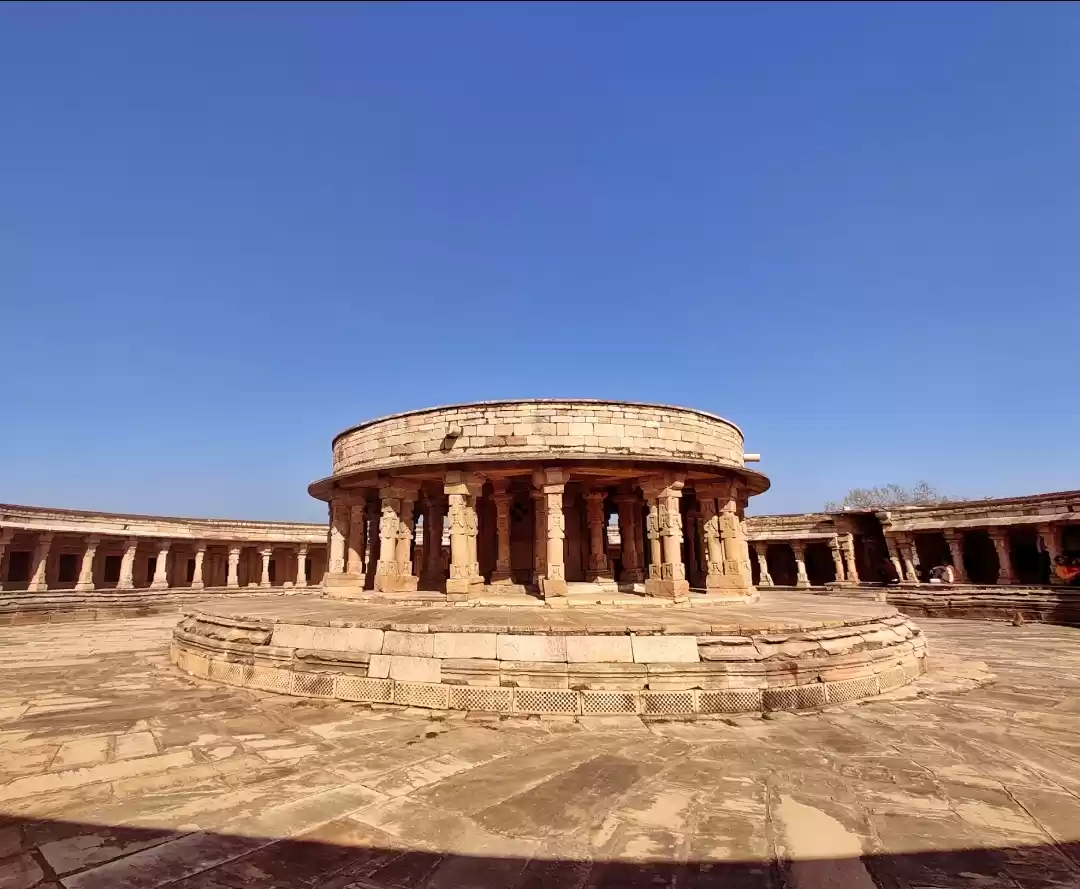If you are looking for a destination that combines spirituality, history, and culture, then you should visit the Lingaraj Temple in Bhubaneswar, the capital city of Odisha. This temple is one of the oldest and most magnificent temples in India, dating back to the 11th century CE. It is dedicated to Lord Shiva, who is worshipped here as Lingaraja, the king of lingas. The temple is also a fine example of the Kalinga style of architecture, which is characterized by intricate carvings, soaring spires, and elaborate sculptures.
In this article, we will explore the various aspects of the Lingaraj Temple, such as its architecture, deities, festivals, timings, and how to reach it. We will also give you some tips on how to make the most of your visit and what to expect at this sacred site. By the end of this article, you will have a better understanding of why the Lingaraj Temple is considered a marvel of ancient Indian architecture and a must-visit place for anyone interested in Indian culture and heritage.

Lingaraj Temple Architecture
The Lingaraj Temple is spread over an area of 25 acres and consists of four main structures: the vimana (sanctum), the jagamohana (assembly hall), the natamandira (festival hall), and the bhoga-mandapa (offering hall). The vimana is the tallest structure, rising to a height of 180 feet. It houses the main deity, Lord Shiva, in the form of a Swayambhu Linga, which means a self-manifested linga. The linga is made of black granite and is about 8 feet in diameter. It is surrounded by a circular platform called the yoni pitha, which represents the female energy or Goddess Parvati.
The jagamohana is a rectangular hall that connects the vimana with the natamandira. It has three tiers of roofs and four doors on each side. The natamandira is a spacious hall where the devotees gather to watch the rituals and dance performances. It has a pyramidal roof and pillars decorated with floral motifs and scenes from Hindu mythology. The bhoga-mandapa is a smaller hall where the food offerings are made to the deity. It has a flat roof and an open porch.
The entire temple complex is adorned with exquisite carvings and sculptures depicting various gods, goddesses, animals, birds, flowers, and geometric patterns. The most notable sculptures are those of Nataraja (the cosmic dancer), Ardhanarishvara (the half-male half-female form of Shiva), Gajasura (the elephant demon), and Chandrashekhara (Shiva with the crescent moon on his head). The temple also has several subsidiary shrines dedicated to other deities such as Lord Vishnu, Lord Ganesha, Lord Kartikeya, Goddess Lakshmi, Goddess Durga, and others.

Lingaraj Temple Deities
The Lingaraj Temple is primarily a Shaivite temple, meaning it worships Lord Shiva as the supreme god. However, it also incorporates elements from other sects such as Vaishnavism and Shaktism. This reflects the syncretic nature of Hinduism, which allows for diversity and tolerance among different beliefs and practices.
The main deity of the temple is Lord Shiva, who is revered here as Lingaraja or Harihara. Harihara means the combination of Hari (Vishnu) and Hara (Shiva), implying that both are one and the same. According to legend, Lord Vishnu once appeared in Bhubaneswar as an ascetic named Ananta Vasudeva. He performed penance at a place called Bindu Sagar Lake near the temple. Lord Shiva was pleased with his devotion and granted him a boon that he would be worshipped along with him at the Lingaraj Temple.
Another important deity of the temple is Goddess Parvati, who is worshipped here as Bhagawati Devi or Bhubaneswari. She is considered to be the consort of Lord Shiva and the presiding deity of Bhubaneswar. She has a separate shrine within the temple complex where she receives daily offerings and prayers from her devotees.
Other deities that are worshipped at the temple include Lord Vishnu, Lord Ganesha, Lord Kartikeya, Goddess Lakshmi, Goddess Durga, and others. Each of them has a specific role and significance in the Hindu pantheon and mythology. For instance, Lord Vishnu is the protector and preserver of the universe, Lord Ganesha is the remover of obstacles and the god of wisdom, Lord Kartikeya is the commander of the divine army and the god of war, Goddess Lakshmi is the goddess of wealth and prosperity, and Goddess Durga is the goddess of power and victory.

Lingaraj Temple Festivals
The Lingaraj Temple celebrates several festivals throughout the year that attract thousands of pilgrims and tourists. Some of the major festivals are:
Mahashivaratri
This is the most important festival of the temple, which falls in the month of February or March. It marks the day when Lord Shiva married Goddess Parvati and also when he performed his cosmic dance or tandava. On this day, devotees observe a fast and offer milk, water, flowers, fruits, and leaves to the linga. They also chant mantras and sing hymns in praise of Lord Shiva. The highlight of the festival is the Mahadipa ceremony, which takes place at night. A huge lamp or dipa is hoisted on top of the vimana and illuminated with hundreds of wicks. The sight of the glowing lamp against the dark sky is a spectacular one and symbolizes the victory of light over darkness.
Chandan Yatra
This is another major festival of the temple, which falls in the month of April or May. It lasts for 22 days and involves a procession of the deities on decorated chariots or rathas. The deities are smeared with sandalwood paste or chandan and taken to Bindu Sagar Lake for a ritual bath or snana. The devotees also apply chandan on their foreheads and bodies as a mark of devotion and respect. The festival culminates with a grand celebration on the last day, when the deities are taken back to the temple amid music and dance.
Rukuna Rath Yatra
This is a unique festival of the temple, which falls in the month of March or April. It commemorates the occasion when Lord Shiva left his consort Goddess Parvati in anger after she interrupted his meditation. He took the form of Lingaraja and rode on a chariot or ratha to Ekamra Kshetra (the old name of Bhubaneswar). The festival involves a procession of Lord Lingaraja on a wooden chariot that has six wheels and 16 pillars. The chariot is pulled by devotees along a fixed route that passes through several streets and markets. The chariot does not take any turns or bends and moves only in a straight line. This is why it is called Rukuna Rath Yatra, which means “the chariot that does not turn”. The festival also features cultural programs such as folk dances, dramas, and music.
Lingaraj Temple Timings
The Lingaraj Temple is open for visitors from 6:00 AM to 9:00 PM every day. However, there are certain timings for different rituals and ceremonies that take place at the temple. These are:
Mangala Alati: This is the first ritual of the day, which takes place at 6:00 AM. It involves waking up the deity with an offering of water, milk, curd, honey, and flowers.
Bhoga Mandapa: This is the second ritual of the day, which takes place at 7:00 AM. It involves offering cooked food to the deity at the bhoga-mandapa hall.
Sakala Dhupa: This is the third ritual of the day, which takes place at 10:00 AM. It involves offering rice, dal, vegetables, sweets, and fruits to the deity at the natamandira hall.
Bhanda Dhupa: This is the fourth ritual of the day, which takes place at 11:00 AM. It involves offering dry fruits, nuts, cakes, and pastries to the deity at the natamandira hall.
Madhyana Dhupa: This is the fifth ritual of the day, which takes place at 12:00 PM. It involves offering rice, dal, vegetables, sweets, and fruits to the deity at the natamandira hall.
Pahuda: This is the sixth ritual of the day, which takes place at 1:30 PM. It involves putting the deity to sleep with an offering of betel leaves, nuts, and flowers.
Sandhya Alati: This is the seventh ritual of the day, which takes place at 6:00 PM. It involves waking up the deity with an offering of water, milk, curd, honey, and flowers.
How to Reach Lingaraj Temple
The Lingaraj Temple is located in the heart of Bhubaneswar, the capital city of Odisha. It is easily accessible by various modes of transport, such as air, rail, road, and local transport. Here are some details on how to reach the Lingaraj Temple by different means:
By Air: The nearest airport to the Lingaraj Temple is the Biju Patnaik International Airport, which is about 6 km away from the temple. The airport is well-connected to major cities in India and abroad by regular flights. You can take a taxi, auto-rickshaw, or bus from the airport to the temple. The fare may vary depending on the distance and time of travel.
By Rail: The nearest railway station to the Lingaraj Temple is the Bhubaneswar Railway Station, which is about 4 km away from the temple. The station is one of the main junctions in the East Coast Railway Zone and has trains from all over India. You can take a taxi, auto-rickshaw, or bus from the station to the temple. The fare may vary depending on the distance and time of travel.
By Road: The Lingaraj Temple is well-connected by road to other parts of Odisha and neighboring states by national and state highways. You can take a bus, car, or bike from any nearby city or town to Bhubaneswar and then to the temple. The road condition is generally good and the traffic is moderate. You can also hire a cab or a driver from any online or offline service provider for a comfortable and convenient journey.
By Local Transport: The Lingaraj Temple is situated in the old town area of Bhubaneswar, which is also known as Ekamra Kshetra. The area is full of narrow lanes and alleys that are best explored by foot or cycle rickshaw. You can also take a cycle rickshaw from any major point in the city to the temple. The fare may vary depending on the distance and time of travel.
Nearby Attractions
The Lingaraj Temple is not only a religious site but also a cultural hub that offers many other attractions for visitors. Some of the nearby places to visit are:
Bindu Sagar Lake
This is a sacred lake that lies adjacent to the Lingaraj Temple. It is believed that Lord Shiva created this lake by collecting water from all the holy rivers in India. The lake is also known as Bindu Sarovara or Ocean Drop Lake because it contains a drop of water from every ocean in the world. The lake is surrounded by many temples and shrines that add to its beauty and serenity. You can take a boat ride on the lake or walk around its banks to enjoy its scenic views.
Ananta Vasudeva Temple
This is another ancient temple that is located near the Bindu Sagar Lake. It is dedicated to Lord Vishnu, who is worshipped here as Ananta Vasudeva or the eternal lord. The temple was built in the 13th century CE by Queen Chandrika Devi, the daughter of Anangabhima III, a king of the Eastern Ganga dynasty. The temple has a unique feature that it faces west instead of east, unlike most Hindu temples. The temple has four chambers that house idols of Lord Vishnu, Lord Balarama, Goddess Subhadra, and Lord Krishna respectively.
Raja Rani Temple
This is another masterpiece of Kalinga architecture that is located about 2 km away from the Lingaraj Temple. It is also known as Indreswara Temple or Love Temple because of its erotic sculptures and carvings. The temple was built in the 11th century CE by an unknown king and queen, whose names are not mentioned anywhere in the temple. Hence, it is called Raja Rani Temple, which means King Queen Temple. The temple has a square sanctum with a pyramidal roof and an octagonal tower. The walls of the temple are decorated with images of various gods, goddesses, dancers, musicians, animals, birds, flowers, etc.
Mukteswar Temple
This is another exquisite temple that is located about 3 km away from the Lingaraj Temple. It is dedicated to Lord Shiva, who is worshipped here as Mukteswara or the lord of liberation. The temple was built in the 10th century CE and is considered to be a gem of Odishan architecture. The temple has a circular sanctum with a conical roof and a torana or arched gateway. The torana is the most striking feature of the temple, as it has intricate carvings of floral motifs, animals, and human figures. The temple also has a well called Marichi Kunda, which is said to have healing powers.
Conclusion
The Lingaraj Temple is a marvel of ancient Indian architecture and a symbol of Odishan culture and heritage. It is a place where you can experience the divine presence of Lord Shiva and his consort Goddess Parvati, as well as the harmony of different sects and beliefs. It is also a place where you can witness the grandeur of festivals and rituals, as well as the beauty of nature and art. If you are looking for a destination that combines spirituality, history, and culture, then you should visit the Lingaraj Temple in Bhubaneswar.
We hope you enjoyed reading this article and learned something new about the Lingaraj Temple. If you have any questions or feedback, please feel free to share them with us in the comments section below. And if you are planning to visit the Lingaraj Temple soon, don’t forget to share your experience and photos with us on Tripoto. We would love to hear from you!

























